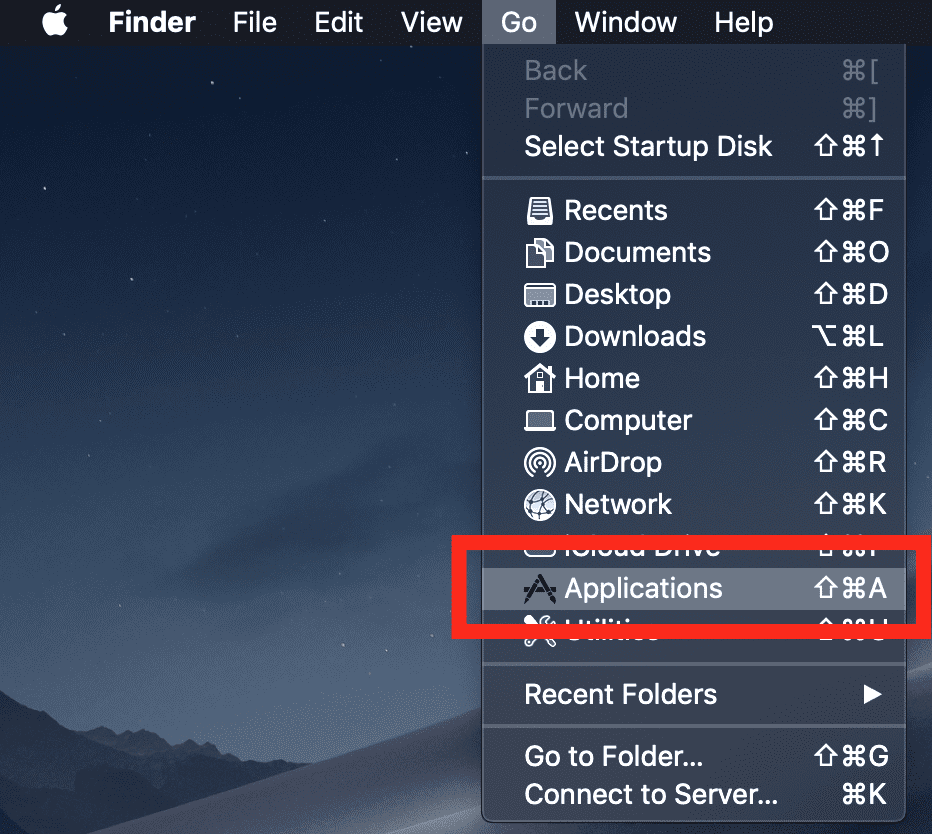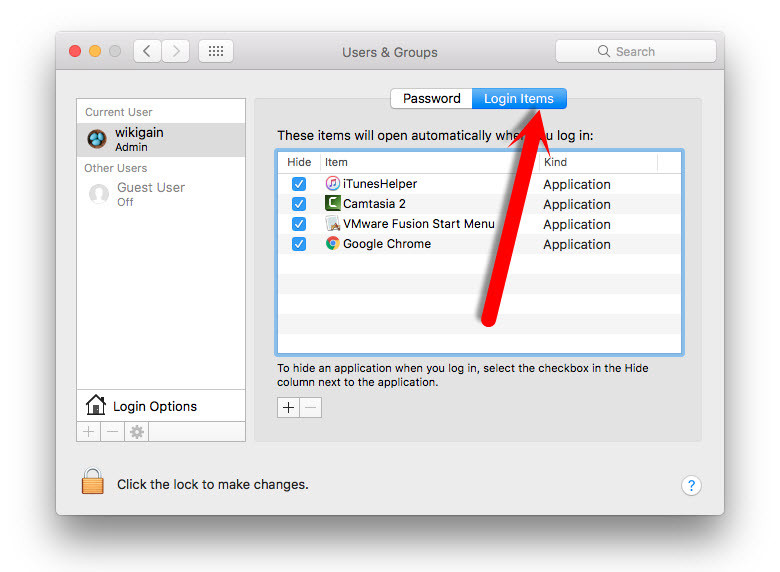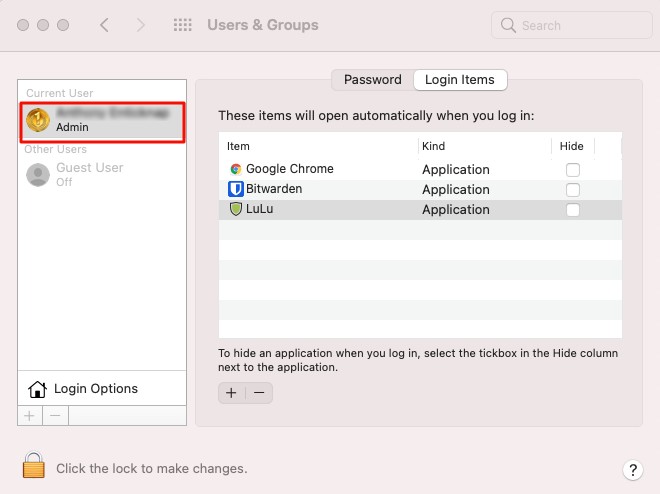- Macos Disable Startup Apps
- Mac Os Startup Apps
- Macos Prevent Startup Apps
- Mac Os Startup Apps
- How To Change Mac Os Startup Apps
- Mac Os Catalina Startup Apps
This will send you to the option to select a startup disk. Select your bootable drive with macOS Catalina from the list of startup disk options. It will begin installing on your Mac. Click Continue in the installation window. MacOS Catalina will install like a standard update. You will agree to the licensing terms before the software reboots on.
A mess of startup and login items might be to blame. Earlier versions of macOS relied on two. Although these methods are the most common ways to launch apps automatically in macOS, they. This is better than the first option because you still have control over the apps you run or install on your macOS Catalina. Option 3: Using the Application Folder Similar to the system preferences option, the application folder mitigates the risk of installing malware when installing an app from an unidentified developer. But for other apps, this behavior is not really justifiable. Thankfully, macOS allows you to remove apps from starting up automatically during login. Open System Preferences Users & Group Login Options ‘Login Items’. Here, you will see the list of apps automatically opening during Mac startup.
When you turn on your Mac, various apps, add-ons, and invisible background processes start running all by themselves. This is usually what you want, but you may sometimes see items running that you don’t recall adding yourself. Where do they come from?
Because such items can increase your Mac’s startup time and may decrease its performance, you’ll want to make sure your Mac is loading only items that are useful to you. Here’s a quick primer on the various kinds of startup and login items and how to manage them.
Macos Disable Startup Apps
Login items
Open System Preferences and click on Users & Groups, then click the Login Items tab. You’ll see a list of apps (and even files and folders) that open every time you log in. This list is different for each user account on your Mac.
Items usually end up on this list because apps added them to it. Most apps that do so ask you for permission first or have an “Open at login” or similar checkbox in its settings. In any case, you can add an item to the list manually by clicking the (+) button, or remove an item by selecting it and clicking the minus sign (-) button.
StartupItems folder
Earlier versions of macOS relied on two folders—/Library/StartupItems and /System/Library/StartupItems—to hold items designated to load when you start your Mac. Apple now discourages the use of the StartupItems folders, but some old apps might still use them.
Normally your /System/Library/StartupItems folder should be empty; but if it contains something that you don’t use anymore, you can drag the unwanted item to the Trash to prevent it from loading automatically the next time you start your Mac.
Launch daemons and agents
Since OS 10.4 Tiger, Apple has given developers another mechanism for launching items automatically: launch daemons and agents that are controlled by the launchd process. This provides more flexibility for developers but it is less transparent to users.
Instead of opening apps directly, launchd loads specially-formatted .plist documents that specify what should launch and under what circumstances. Sometimes these launch items run constantly in the background, sometimes they run at scheduled intervals, and sometimes they run as needed—for example, in response to an event such as a change in a certain file or folder—and then quit.

The .plist files that launchd uses can occupy any of five folders, and their location determines when the items load and with what privileges:
Items in /Library/LaunchDaemons and /System/Library/LaunchDaemons load when your Mac starts up, and run as the root user.
Items in /Library/LaunchAgents and /System/Library/LaunchAgents load when any user logs in, and run as that user.
Items in /Users/your-username/Library/LaunchAgents load only when that particular user logs in, and run as that user.

Don’t change System files: Of those five folders, the two located in the /System folder (/System/Library/LaunchDaemons and /System/Library/LaunchAgents) are for components included as part of macOS, and you should resist the temptation to remove or alter them—they’re essential to keep your Mac running correctly.
Modify others as you like: Feel free to browse through the files in the other folders to see what’s there. You can modify them—for instance, to disable them or to change how often they run—but before you do, you should understand a few things about how they work.
When you start your Mac or log in, the launch items in the relevant folders are loaded (that is, registered with the system) unless they have a Disabled flag set. Thereafter, their instructions will be carried out until you restart, even if you drag the launch item to the Trash. To see a list of all the currently loaded launch items on your Mac, open Terminal (in /Applications/Utilities) and type launchctl list and then press Return.
If you want to stop a launch item from running without your having to restart, open Terminal and type launchctl unload followed by a space and the full path to the launch item. An easy way to add an item’s full path is to drag it to the Terminal window) For example, take this command:
It unloads the launch agent that enables AppleScript folder actions. Repeat the command with load instead of unload to turn it back on.
Because most launch items run on a schedule or on demand, and because any of them could be disabled, the fact that something is present in one folder doesn’t necessarily mean the process it governs is currently running. To see what’s running at the moment, open Activity Monitor—but bear in mind that the name of a given process as shown in Activity Monitor might not resemble the name of the .plist file that tells macOS to launch it.
Other explanations for mystery processes
Mac Os Startup Apps
Although these methods are the most common ways to launch apps automatically in macOS, they aren’t the only ones. If you have a mystery process that you can’t track down in any of these places, it could also be one of these:
Kernel extensions: Kernel extensions, or kexts, live in /System/Library/Extensions and load at startup. They provide low-level features such as processing audio and adding support for peripherals. Most kexts on your Mac are part of macOS. The safest way to remove a third-party kext is to run an uninstaller provided by the developer.
Crons:Cron is a Unix scheduling utility built into macOS. It’s more-or-less not used anymore in favor of launchd, but you never know what might be lingering on a Mac that has gone through a lot of updates or is running old software.
Login scripts:Login scripts, like startup items, were used in older versions of macOS but are now deprecated.
Installation and Configuration
Participants learn to update, upgrade, and reinstall macOS Catalina, then set up and configure macOS on an individual Mac. Participants are introduced to the command-line interface and macOS Recovery.

User Accounts
Participants learn to manage user accounts and user home folders. They also learn about macOS security and password management.
Macos Prevent Startup Apps

File Systems and Storage
Participants learn to manage file systems, storage, encryption, permissions, and file sharing.
Data Management
Participants use hidden items, shortcuts, file archives, metadata, and Spotlight. They also learn to manage system resources and Time Machine.
Mac Os Startup Apps
Apps and Processes
Participants install, manage, and troubleshoot apps, and manage documents.
How To Change Mac Os Startup Apps
Network Configuration
Participants manage basic and advanced network settings and troubleshoot network issues.
Network Services
Participants manage network services, host sharing, and a personal firewall.

Mac Os Catalina Startup Apps
System Management
Participants manage printers and scanners, then troubleshoot peripherals, startup, and other system issues.
